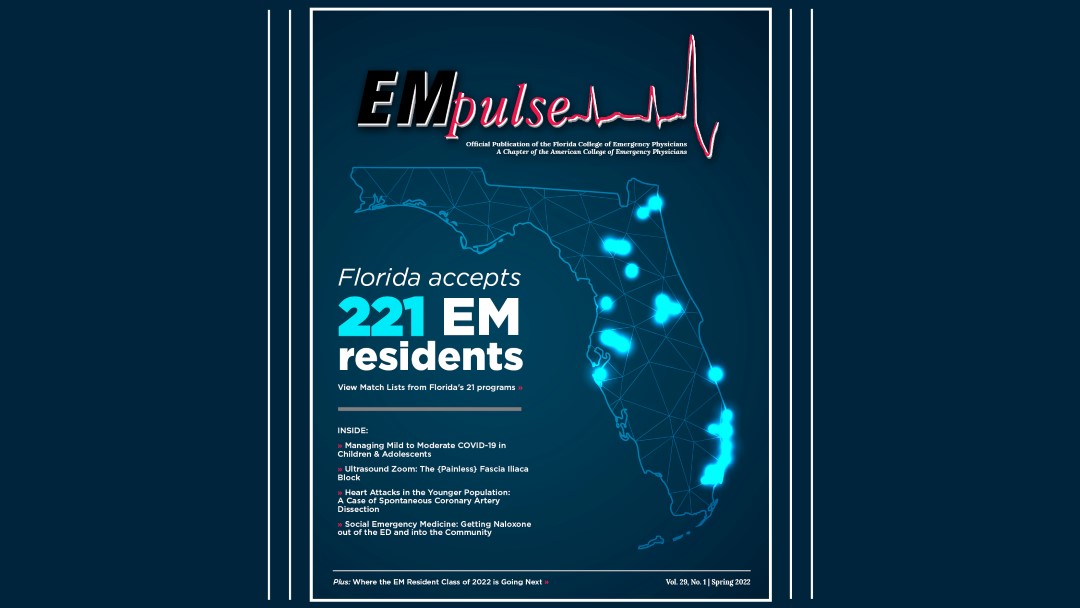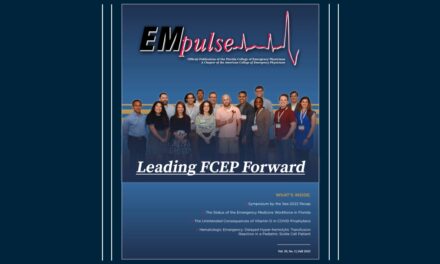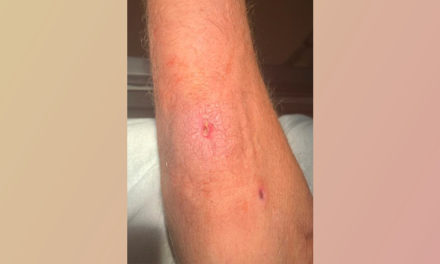Spring 2022: Pediatric EM: Managing Mild to Moderate COVID-19 in Children and Adolescents
COVID-19 cases among children spiked dramatically during the delta and omicron variant surges. Since the pandemic began, children represent 18.9% of cumulative cases and make up 22.2% of the U.S. population. This fortunately has not equated to hospitalizations. Among reporting states, children ranged from 1.5%-4.6% of their cumulative hospitalizations and 0.1%-1.5% of all child COVID-19 cases resulted in hospitalizations. In all states reporting, 0.01% of pediatric cases resulted in death. MISC (Multisystem Inflammatory Syndrome in Children) has been a concern, with the total number of patients meeting criteria having totaled 6851 with 59 deaths, which equates to 0.05% of all pediatric COVID-19 cases. MISC has remained a high concern in which vaccine effectiveness data has remained uncharacterized according to Pfizer’s data, and there is no data that shows treatment of COVID-19 or any type of prevention.
With the recent omicron surge, many of the previous treatments were deemed ineffective, and there are now only a few treatments available with limited supplies due the federal government’s control over the utilization of resources moving forward in the pandemic. Many states like Minnesota have made the decision based on the resources and availability that only 5% was allotted for pediatric treatment. Vaccination continues to be an effective tool in protecting all from COVID-19.
There are recommendations for the outpatient management of mild to moderate COVID-19 in children and adolescents that will help navigate management challenges. The therapies have been authorized for individuals at highest risk for severe COVID-19 and disease progression, including those who may not be eligible for COVID-19 vaccination, have an underlying medical condition, or are receiving therapies that are known to result in a poor antibody response to vaccination. Current evidence remains limited regarding which underlying medical conditions are definitively associated with an increased COVID-19 risk in children.
There continues to be a paucity of pediatric-specific data regarding the safety, efficacy and pharmacokinetics of monoclonal antibodies and oral antiviral medications across all pediatric age groups, and no such data has been produced moving into year two of the pandemic. The NIH COVID-19 Treatment Guideline Panel’s current outpatient treatment recommendations for mild to moderate COVID-19 in outpatients are Sotrovimab, Remdesivir, Paxlovid and Molnupiravir. The criteria for Sotrovimab for COVID-19 treatment has been the same as it has been for the previously approved monoclonal antibody treatments. They include: non-hospitalized patient ≥12 years of age and weighing ≥40 kg, laboratory-confirmed SARS-CoV-2 infection, mild to moderate COVID-19 and within 10 days of symptom onset, and high risk for progressing to severe COVID-19 and/or hospitalization. With the limited supply and safety data, the children must meet one of the high risk criteria in order to qualify for therapy. The high-risk criteria in the FDA EUA for monoclonal antibody include: BMI ≥ 85th percentile for age and gender based on CDC growth charts, immunosuppressive disease, receipt of immunosuppressive therapies, neurodevelopmental disorders, medical-related technological dependence that is not related to COVID-19, sickle cell disease, congenital or acquired heart disease, chronic lung disease, asthma or other chronic respiratory disease that requires daily medication for control, diabetes, chronic kidney disease, pregnancy, and chronic liver disease.
The early use of intravenous remdesivir and new oral antiviral medications molnupiravir and Paxlovid have been evaluated in controlled clinical trials among non-hospitalized, high-risk individuals with mild to moderate COVID-19 and have been found to improve COVID-19 outcomes including disease progression, hospitalization, and death. Current NIH recommendations favor the use of Paxlovid followed by sotrovimab and remdesivir for mild to moderate COVID-19 in outpatients. Molnupiravir should only be considered in those over 18 if the three options are not available or clinically cannot be used. The EUA authorizes the use of remdesivir IV in children weighing at least 3.5 kg and with laboratory-confirmed COVID-19, who are within 7 days of symptom onset, at high risk for progression to severe COVID-19, and not hospitalized for COVID-19. However this requires daily infusions on three consultative days, which can be difficult to coordinate in the outpatient setting.
The FDA issued an EUA for the use of oral antiviral therapy for the treatment of mild to moderate COVID-19 at the end of December on the basis of results of a Phase 2/3 randomized, double-blind, placebo-controlled trial in high-risk individuals ≥18 years of age. There is no pharmacokinectic or pharmacodynamic data on anyone under the age of 18. Furthermore, there is no safety or efficacy date on this population as well. The EUA authorizes the use of Paxlovid in: children ≥12 years of age and weighing ≥40 kg, with laboratory-confirmed CVOID-19, are within 5 days of symptom onset, and who are at high risk for progression to severe COVID-19 and not hospitalized for COVID-19. Paxlovid should not be used in individuals with severe hepatic or renal impairment, and there is a potential for severe drug-drug interactions if given concurrently with other medications that rely on or induce CYP3A enzymes for metabolism and clearance, which include antiarrhythmics, oral anticoagulants, immunosuppressants, anticonvulsants, antineoplastics, and neuropsychiatric drugs. The EUA authorizes the use of molnupiravir in: individuals ≥18 years of age with laboratory-confirmed SARS-CoV-2, who are within 5 days of symptom onset and at high risk for progression to severe COVID-19, and for whom other, FDA-authorized COVID-19 treatment options are not readily accessible, available, or clinically appropriate. Children were not eligible to participate in the study because of concerns about effects on bone and cartilage growth. No dosage adjustments are needed in patients with renal or hepatic impairment of any degree. Molnupiravir is not recommended for use in pregnancy given the potential of fetal harm. Current NIH guidelines recommend the use of molnupiravir in eligible patients only when monoclonal antibody, Paxlovid, or remdesivir cannot be used.
There will be varying access to monoclonal antibodies and antivirals geographically, requiring additional triage for patients at highest risk for COVID-19. State and local health departments will allocate therapies to healthcare facilities prioritizing the treatment of COVID-19 in patients at highest risk for COVID-19 complications and hospitalizations. This means supplies may be scarce for pediatric treatment and must only be given to those who truly meet the criteria put forth by the FDA. Other than supportive care, therapeutic interventions for children and adolescents with mild to moderate COVID-19 will be limited. Parents/caretakers will be concerned and scared when their child is diagnosed with COVID-19 and will want some therapeutic intervention. Many people have heard of these treatments for COVID-19 and may ask about the option. With the limited safety and efficacy data supporting their use in children and adolescents under 18, a serious discussion about the risks, benefits, and shared decision-making with the parents/caretakers may be the best path forward. ■
References
FDA Takes Actions to Expand Use of Treatment for Outpatients with Mild-to-Moderate COVID-19. Jan. 21, 2022.
This article is part of the following sections:








